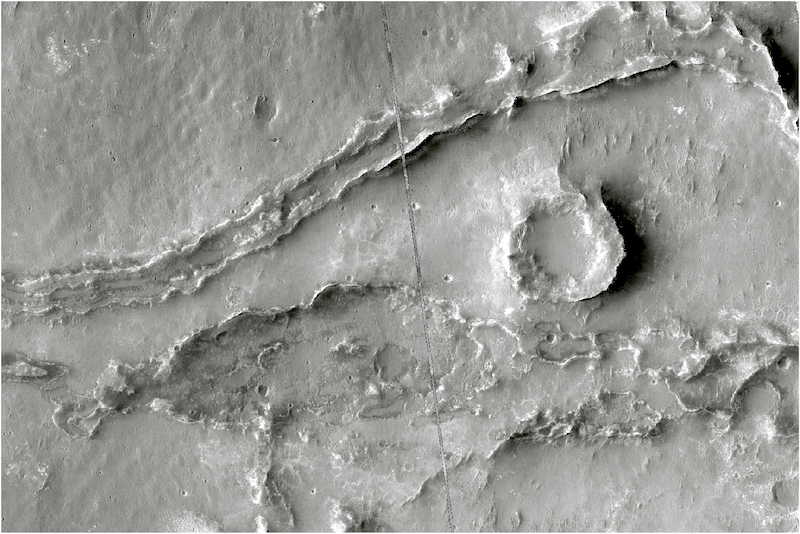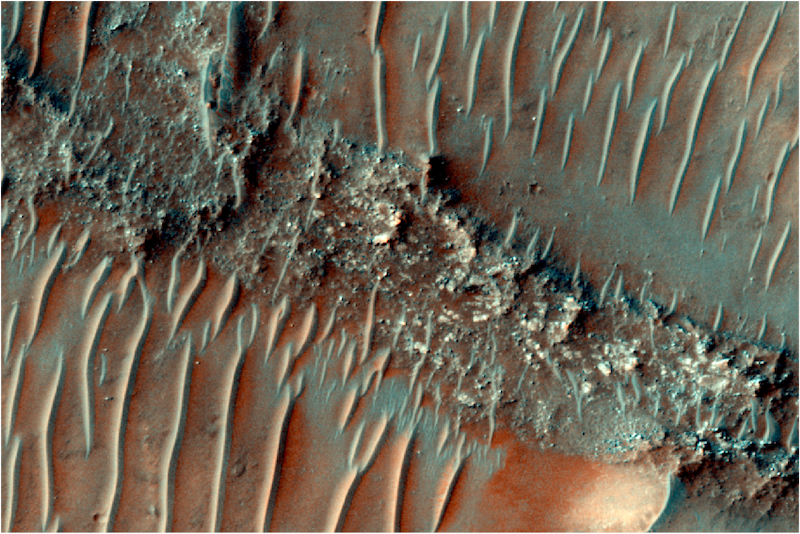- Rivers were once common on Mars. Today, we can still see thousands of ancient riverbeds on the red planet.
- Scientists have now found many more ancient river valleys in the Noachis Terra region, which has been relatively unexplored until now. The river valleys appear as inverted channels, where harder standing sediments have been left behind after erosion.
- Mars was likely even wetter than first thought, the discovery shows. Rains formed the rivers over relatively long geologic timescales.
Ancient rivers on Mars
We know that Mars was once a watery world, with rivers, lakes and likely even an ocean. On July 10, 2025, a team of scientists led by Adam Losekoot at the Open University in the U.K. said it appears the planet was even wetter than previously thought. Using data from the Mars Reconnaissance Orbiter and Mars Global Surveyor, the scientists said they have discovered many more ancient riverbeds: over 9,300 miles (15,000 km) of them altogether. They are in the Noachis Terra region of Mars and are similar to other features on the planet called inverted ridges. They are evidence for widespread flowing water.
The features suggest water was stable in Noachis Terra around 3.7 billion years ago. They also indicate that precipitation was the most likely source of the water.
The researchers presented their findings at the Royal Astronomical Society’s National Astronomy Meeting 2025 in Durham, U.K., on July 10, 2025.
Inverted riverbeds in Noachis Terra
Until now, scientists hadn’t studied the Noachis Terra region as much as some other places on Mars. One of the main reasons is that it contains relatively few recognizable ancient riverbeds. But Losekoot and his colleagues did something different. They looked instead for inverted channels called fluvial sinuous ridges. Those are like riverbeds, but appear as ridges instead of valleys. This happens when rivers deposit sediments, and those sediments gradually harden into standing ridges after the rivers have dried up. As erosion removes softer material around them, the ridges become exposed.
Noachis Terra is a relatively unchanged region of Mars. By studying it more, scientists can find clues about what this part of the planet was like billions of years ago. Losekoot said:
Studying Mars, particularly an underexplored region like Noachis Terra, is really exciting because it’s an environment which has been largely unchanged for billions of years. It’s a time capsule that records fundamental geological processes in a way that just isn’t possible here on Earth.

Data from Mars orbiters
The researchers used data from three instruments on two orbiting spacecraft for the study. These were the Context Camera (CTX) and the High Resolution Imaging Science Experiment (HiRISE) on Mars Reconnaissance Orbiter, and the Mars Orbiter Laser Altimeter (MOLA) on Mars Global Surveyor (which ended its mission in November 2006).
Analysis of the data revealed the locations, lengths and morphologies (shapes) of the ridge systems across a wide region. From the RAS meeting description:
We find fluvial sinuous ridges to be common across Noachis Terra, with a cumulative length of more than 15,000 km [9,300 miles]. These are often isolated segments, but some systems are hundreds of kilometers in length.

A stable, wet environment
The ancient riverbeds in Noachis Terra are extensive. They extend for hundreds of kilometres and cover about 15,000 km altogether. The ridges are also quite tall, rising tens of meters (yards) above the surrounding landscape.
Plus, the fact that they are so extensive shows the rivers formed under relatively stable conditions that lasted a significant amount of time. Their spatial distribution – the amount of space they occupy on the terrain – also indicates the source of the water precipitation, that is, rain. This conclusion is similar to that of another study reported last April. That study also said rain or snow fed ancient rivers and lakes on Mars.
Losekoot said at the RAS meeting:
The broad distribution of fluvial sinuous ridges suggests a broadly distributed source of water. The most likely candidate is precipitation, suggesting a benign surface environment. For fluvial sinuous ridges to have formed mature, interconnected systems, up to tens of meters high, these conditions must also have been relatively long-lived. This suggests that about 3.7 billion years ago, Noachis Terra experienced warm and wet conditions for a geologically relevant period.
Bottom line: A new study of data from two Mars orbiters shows vast ancient rivers on Mars in the Noachis Terra region. They show that Mars was even wetter billions of years ago than we thought.
Source: National Astronomy Meeting 2025
Via Royal Astronomical Society
Read more: New study says rain on ancient Mars fed rivers and lakes
Read more: Clays on Mars as tantalizing oases for microbial life
